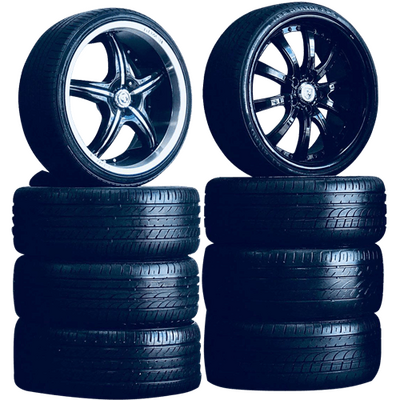- 1-905-452-8193
- Contact Us
- Member Login
- Get Listed Today
- 220,911 members

Let's face it, pumping fuel isn't exactly a thrill these days. With prices constantly on the rise, everyone's looking for ways to squeeze more miles out of every gallon.
It's not just about the car itself - tyres play a big role in fuel economy too. In this blog post, we'll explain the connection between tyres and mileage, and show you how to choose tyres that will help you get the most out of every gallon.
Fuel economy is measured in miles per gallon (mpg). MPG efficiency tells you how far your car can travel on a single gallon of fuel. Higher mpg means better fuel economy (the car goes further on less fuel).
Fuel efficiency comparisons are important for consumers who want to save money on gas and reduce their environmental impact. When comparing fuel efficiency, it's important to consider the specific needs, driving habits of the individual, and the miles per gallon (mpg) ratings of different vehicles, typically within the same class (e.g., compact cars, SUVs, trucks).
Websites like https://www.fueleconomy.gov/ allow you to compare specific models side-by-side based on their official EPA mpg ratings.
Here's a quick way to think about it:
Cars with lower fuel ratings (like mpg or L/100km) are more fuel-efficient. Imagine a car that gets 50 miles per gallon (mpg) compared to one that only gets 20 mpg. The 50-mpg car goes much farther on the same amount of gas.
SUVs and trucks naturally use more fuel than sedans or hybrids. So, a good fuel economy for a big SUV might be around 20 mpg, while a small car could be closer to 40 mpg.
But that rating isn't set in stone. Here are 5 key factors that affect your car's gas mileage:
Tyres with high rolling resistance require more energy to roll, which means your car has to work harder and burns more fuel. Here's what to look for in tyres for better fuel economy:
This is the key. Look for tyres, like off road tyres, that are specifically designed with low rolling resistance to minimize energy wasted.
Regularly check and adjust your tyre pressure according to your car's recommendations.
While all-season tyres are a good option, winter tyres provide better traction in cold weather and can improve vehiclefuel efficiency in those conditions.
Less tyre resistance = less energy used by engine = better fuel mileage.
Rolling resistance is the force that opposes a tyre's motion as it rolls on a surface. The higher the rolling resistance, the more energy your engine needs to overcome it and keep the tyre moving, which means worse fuel economy. But Special tyres, like All Terrain Tyre wangara with low rolling resistance help you travel farther on each fuel tank.
Yes, tyres can improve your car's mileage.
Tyres with high rolling resistance require more energy to roll, which means your car has to work harder and burns more fuel. Here's what to look for in tyres for better fuel economy:
While several tyre brands offer fuel-efficient options. The MICHELIN e·PRIMACY stands out for its exceptionally low rolling resistance.
This innovative technology translates to significant fuel savings, with estimates suggesting drivers can save around 0.21 Liters per 100 kilometres and roughly $100 over the tyre's lifespan.
Additionally, the MICHELIN e·PRIMACY earns an A rating in the European tyre labelling system for fuel efficiency, making it a clear leader in this category.
The EU tyre label provides valuable information to help you choose fuel-efficient tyres. Look for these key indicators:
In addition to choosing the right tyres, here are some ways to increase mpg:
How you drive also affects fuel economy. Here are some eco-driving tips:
At Wangara Tyre & Auto, we can help you find the perfect tyres to improve your car fuel efficiency. We offer a wide selection of low-rolling resistance tyres that are designed to get you more miles per gallon.
Our experts can also advise you on proper tyre maintenance and inflation to optimize your fuel economy.
Shop Fuel-Efficient Tyres Now!
Tyres with higher rolling resistance require more energy to roll, which means your engine has to work harder and burn more fuel. Think of it like pushing your car - the easier it rolls, the less effort it takes.
The European Union tyre label has a fuel efficiency rating displayed as a letter grade from A (most efficient) to E (least efficient). Look for tyres with an A rating for the best fuel savings.
Besides fuel efficiency, the EU tyre label shows the tyre's wet grip rating (important for safe driving in wet conditions), noise level, and winter performance.
